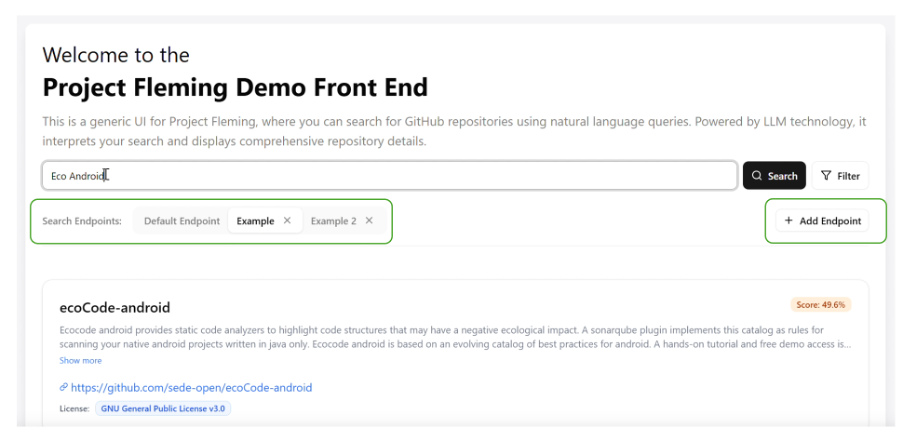Unlocking Multi-Endpoint Search in Project Fleming's Generic Frontend

Exciting new capabilities have arrived in Project Fleming’s generic frontend, transforming the way users interact with multiple Databricks endpoints. With the latest update, users can now add multiple endpoints through the tools UI, enabling seamless searches across all configured sources simultaneously. 🔍
🎯 What’s New?
- Multi-endpoint integration – Users can now connect multiple Databricks endpoints within the UI, bringing varied datasets into one cohesive search experience.
- Unified search – Instead of querying individual endpoints separately, users can now perform searches across all added sources in one go. ⚡
- Flexible results navigation – Results can be explored efficiently, with users able to switch between different tabs to compare data from each endpoint.
🔥 Why This Matters
This enhancement is a game-changer for workflows that require cross-endpoint searches. Whether performing bespoke searches across multiple datasets or comparing model results during testing, users can now streamline their work within a single tool. This update eliminates the need for manual aggregation and significantly improves efficiency in data analysis. 🚀
By integrating multi-endpoint functionality into the generic frontend, Project Fleming is empowering users with a more connected, more efficient, and more adaptable search environment.
🤝 Get Involved: Contribute to Project Fleming
Project Fleming thrives on the power of community. Whether you're a developer, researcher, data scientist, or AI enthusiast, your contributions can help shape the future of open-source AI discovery.
Here’s how you can get involved: - ⭐ Star the project on GitHub - 🧠 Join discussions and share your ideas in the community forums - 📢 Spread the word by writing blog posts, tutorials, or hosting meetups
Together, we can build a smarter, more open AI future.
